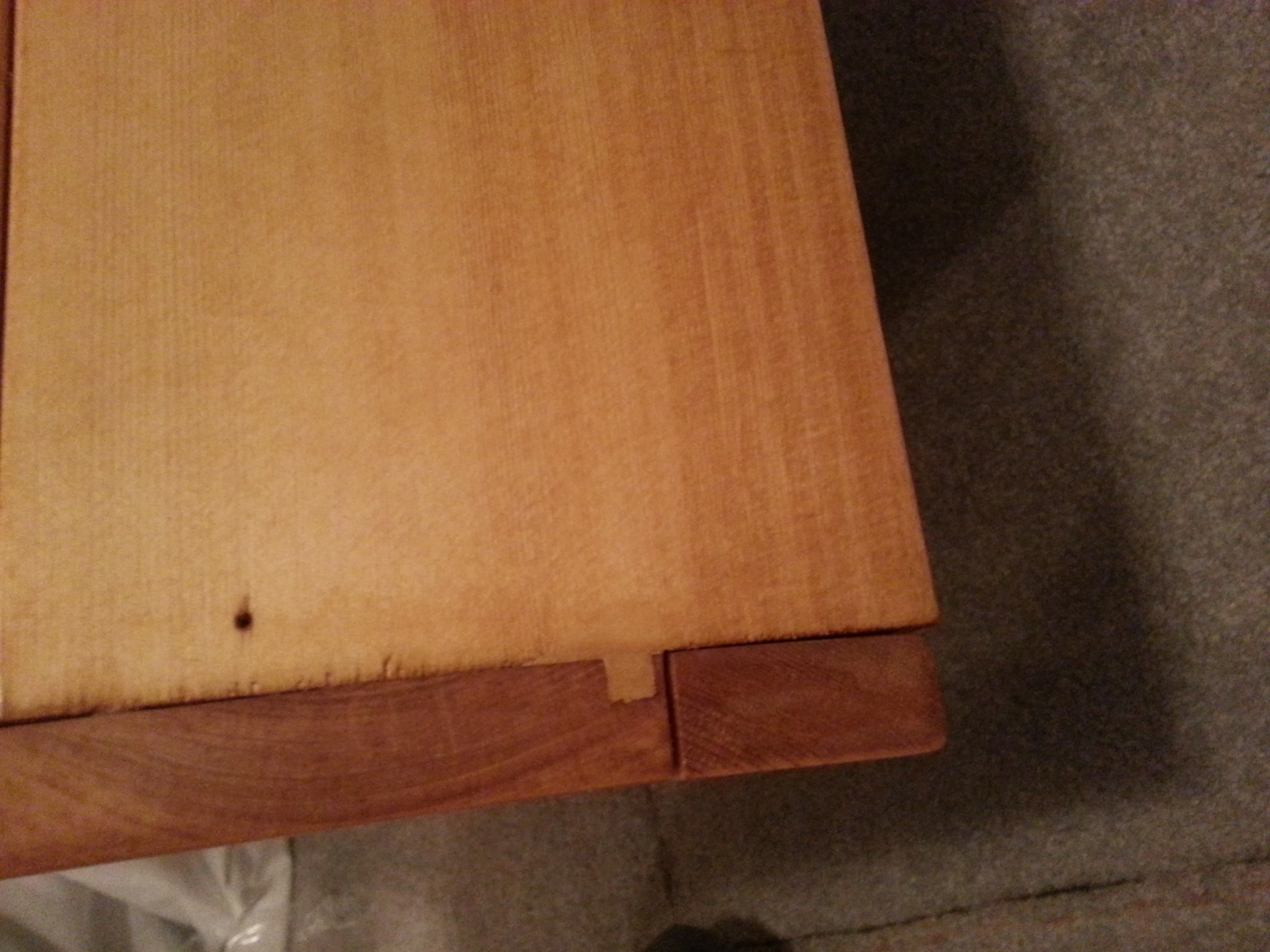Supergrump
Well-Known Member
I offered to serve beer at my cousin's wedding last weekend and I needed something nice to serve it in. I could have gone with a regular colman cooler style jockey box, but for a wedding I wanted to serve it in style. So, I build a wooden Jockey box:


The box is made from pine, stained and varnished. The fittings are brass.

I made a false back on the inside so I could route the beer lines discretely out the bottom of the back. I can alternatively send the lines out the front near the drip tray if I'm serving with the back facing the 'customers'.

The drip tray is a drawer that closes for easy transport.

The inside is insulated with 1 inch pink insulating Styrofoam. I sealed the entire inside with 2-part epoxy (West System brand) to water-proof it. You can also see the false back that routes the beer lines down to the bottom of the box as it exits.
Regarding the use of copper - I'm very aware that "copper post-fermentation is a no-no". I decided to go with copper, then started reading these forums and saw that phrase quoted everywhere like a broken record. I did get a bit worried and tried to source out either a chill plate or stainless coil, but by that time I only had 1 week till the wedding and couldn't get either locally on time. I intend to upgrade to stainless eventually (probably before it's next use, next summer) so no need to freak out in the replies. I'm mostly looking to show off the box itself, not the functional parts of the jockey box.
I served 30 gallons with this last Saturday and it worked flawlessly. Despite the warnings of copper use - there was no off-taste imparted, and the beer poured cold for 8 hours.
I did have one snag - I filled it with ice while the lines had water in them (I flushed the sanitizer out just prior to setting up) and had a small panic when the beer wouldn't flow after hooking up the kegs. After frantically pouring water over the copper coils to thaw them with a long queue of thirsty wedding guests waiting, the beer started flowing and everything worked great for the rest of the evening. Lesson learned for the future.
This has been a source of stress for the past 4 weeks (building the box and worrying about the quality of my beer). I'm really glad it all came together in the end.


The box is made from pine, stained and varnished. The fittings are brass.

I made a false back on the inside so I could route the beer lines discretely out the bottom of the back. I can alternatively send the lines out the front near the drip tray if I'm serving with the back facing the 'customers'.

The drip tray is a drawer that closes for easy transport.

The inside is insulated with 1 inch pink insulating Styrofoam. I sealed the entire inside with 2-part epoxy (West System brand) to water-proof it. You can also see the false back that routes the beer lines down to the bottom of the box as it exits.
Regarding the use of copper - I'm very aware that "copper post-fermentation is a no-no". I decided to go with copper, then started reading these forums and saw that phrase quoted everywhere like a broken record. I did get a bit worried and tried to source out either a chill plate or stainless coil, but by that time I only had 1 week till the wedding and couldn't get either locally on time. I intend to upgrade to stainless eventually (probably before it's next use, next summer) so no need to freak out in the replies. I'm mostly looking to show off the box itself, not the functional parts of the jockey box.
I served 30 gallons with this last Saturday and it worked flawlessly. Despite the warnings of copper use - there was no off-taste imparted, and the beer poured cold for 8 hours.
I did have one snag - I filled it with ice while the lines had water in them (I flushed the sanitizer out just prior to setting up) and had a small panic when the beer wouldn't flow after hooking up the kegs. After frantically pouring water over the copper coils to thaw them with a long queue of thirsty wedding guests waiting, the beer started flowing and everything worked great for the rest of the evening. Lesson learned for the future.
This has been a source of stress for the past 4 weeks (building the box and worrying about the quality of my beer). I'm really glad it all came together in the end.










































![Craft A Brew - Safale S-04 Dry Yeast - Fermentis - English Ale Dry Yeast - For English and American Ales and Hard Apple Ciders - Ingredients for Home Brewing - Beer Making Supplies - [1 Pack]](https://m.media-amazon.com/images/I/41fVGNh6JfL._SL500_.jpg)


















